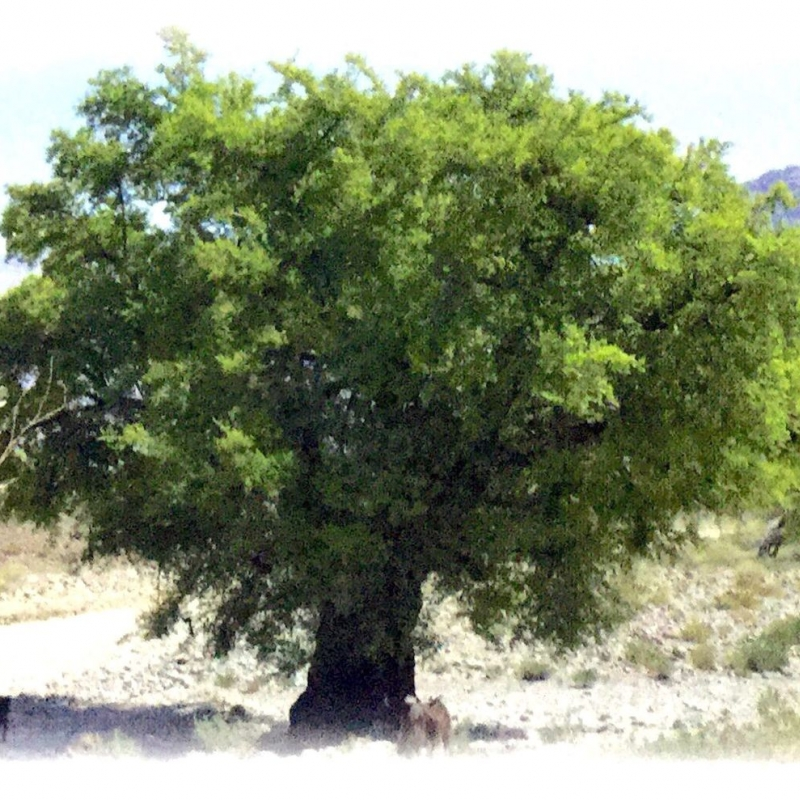Red for Green – Bishnoi Sacrifice for Khejri
9/11 has become a household date, even a term, for the whole world - perhaps, even for those who were not born in 2001. I was in the vicinity of New York, when this tragedy that drastically changed the human relations across the world, took place. An epoch making day of violence on innocent thousands, which has divided human history into pre and post-9/11. But almost 3 centuries before that, on or around the very same day, India witnessed a very violent death of 363 innocent people - but it was not an accidental death, but rather a death which they courageously embraced as the price they paid for keeping their fellow beings alive! In honour of them, in 2013, Sep. 11th was declared 'National Forest Martyrs' Day'.
The place
is Thar desert of India, in Rajasthan, with very scanty and erratic rainfall (maximum
annual precipitation of 500 mm). The scrubby and rare vegetation here has some
saving grace like the evergreen Khejri (Prosopis cineraria),
the state tree of Rajasthan, revered as shami from Vedic times.
It is almost a kalpavrksha of the desert, with several usages
for humans (shade, edible pods, nitrogen fixing, soil binding, fuel, cattle
fodder), and as habitat for several animal, bird and insect species. Dried
green pods (sangria) is used in cooking throughout the year, and dried
mature pods (kho-kha) have a sweetish edible pulp, liked by children.
This unfriendly terrain is
chiefly inhabited by the Bishnoi sect. These Vishnu devotees follow
the 29 laws of Guru Jambheswar, a 15th century seer - hence the name 'bis' (twenty)
and noi (nine). Of these, eight are instructions for living
harmoniously in the inhospitable land by protecting, plants and animals, and
animal husbandry. It is another story, how Jambhaji, from hard life
experience of drought and death around, was enlightened regarding the green practices
that promote and sustain life around.
Khejarali was a typical Bishnoi
village 18 kms from Jodhpur, green and rich with Khejri trees
thanks to Bishnoi life style. Amritadevi, involved in household chores and
tending to her 3 daughters, was shaken by the sudden appearance of King Abhay
Singh's men equipped with sharp axes, landing on the scene to gather firewood
for preparing the mortar mix of quicklime and sand for the newly proposed
palace at Mehrangarh Fort, Jodhpur.
As preserving Khejri trees
formed one of the precepts of the Bishnois, Amritadevi pleaded with the
intruding assailants, who were unmoved. She dared them by hugging on to
the tree, to cut through her, which they did nonchalantly. Though
terrified, the 3 young brave daughters followed the suit. The news spread
through the region like wildfire and in no time 83 Bishnoi villages gathered
around Khejarali, and held council deciding to give up one Bishnoi life for
each tree. And in the struggle, perished 363 bishnois, offering the bravest
example of the sacrificial non-violent (ahimsatmak) fraternal
love for non-human children of Mother Nature!
When this dreadful news reached
the King, he withdrew the plan for the new palace. Today, we analyse it as a
brave act for environment protection - one of the most courageous sacrifices
for the cause of sustainability. But for the Bishnois, it is a matter
of dharma (religion, which also means duty). Presently,
the world leaders and the world religions have begun to highlight the human
duty of being a protective member of the great planet family, though its practice
still has vast grounds to cover!
The world famous chipko movement
(tree huggers 1973) of Tehri-Garhwal and its resonances elsewhere in India
for jungle bachaav, and similar movements world wide, have drawn
inspiration from the sacrifice of the Bishnois.
At
present, the Khejri population is under severe stress and threat. Many have been afflicted with adverse
climatic impacts, human activity and parasite attack of Gononderma luciderm. Some government promotion has led to the
exotic Prosopis juliflora, (ganda bawal or the mad tree)
spreading rapidly and displacing the more shady and friendly indigenous Khejri.
The
observation of a day in honour of these great martyrs should awaken in us,
irrespective of our faith, the truth of the oneness of the planet family (vasudhaiva
kutumbakam) and human duty (dharma) of ensuring the end of exploitative
and destructive use of the rest of the beings.
References:
A Study of Two Species of Genus Prosopis – P. Cineraria and P. Juliflora.
Bishnoi, Saraswati. 2018. Khejri: A Wonder Tree of the Thar.
https://www.sahapedia.org/khejri-wonder-tree-of-the-thar
Natesh,
S. 2020. When Amritadevi and 362 Bishnois sacrificed their lives for the Khejri
Tree. https://www.sahapedia.org/when-amrita-devi-and-362-bishnois-sacrificed-their-lives-khejri-tree
Vishnu. 2009. The Tale of Bishnoi’s. https://vishnuvishnoi29.blogspot.com/2009/01/tale-of-bishnois.html

No comments:
Post a Comment